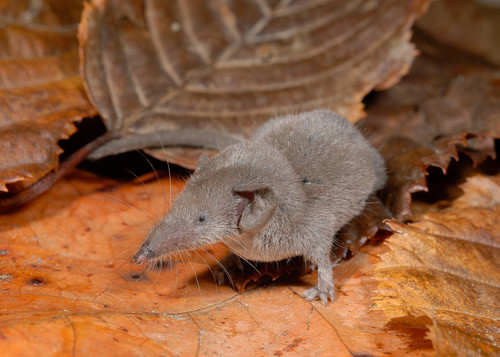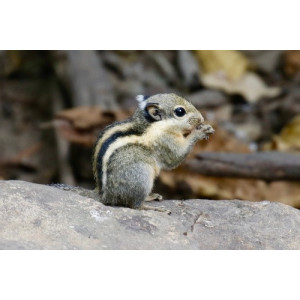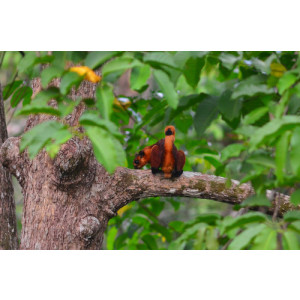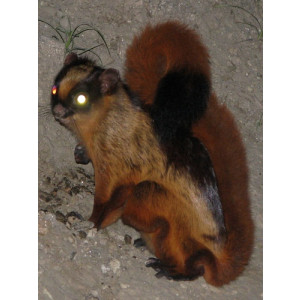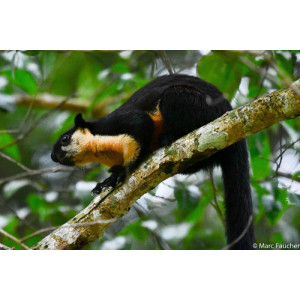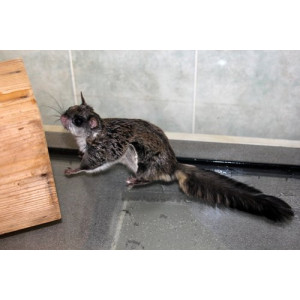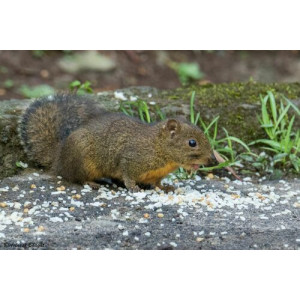White- toothed Pigmy Shrew Did you see this animal?
Scientific Name : Suncus etruscus
Family : Soricidae
Order : Eulipotyphla
Class : Mammalia
Phylum : Chordata
Other Name : Savi’s Pygmy Shrew
Habitat : Forest, Shrubland, Grassland, Desert
Description : Their size and weight are awe-inspiring, with adult shrews only growing up to 3-5 cm in length and weighing around 1.8-2.7 grams, which is less than a penny.
The white-toothed pygmy shrew has a dark brownish-grey coat with a pale grey belly, distinguishing it from its red-toothed shrew relatives. Its teeth are a unique characteristic as they are white, unlike other shrews, which have red teeth. The teeth are incredibly sharp and have an important role in the shrew's insectivorous diet.
These shrews are insectivores and feed on insects, spiders, and other small invertebrates. They are found in a variety of habitats, including grasslands, woodlands, and wetlands. They are active during the day and night and have a high metabolism, meaning they need to eat frequently to survive. The shrews use their keen senses to locate prey, and their small size allows them to enter narrow passages and burrows in search of food.
Reproduction is a vital part of the white-toothed pygmy shrew's life cycle. These shrews have a short lifespan of only a year or two and can produce several litters of 2-6 young in a year. Females are pregnant for around three weeks before giving birth to young that are born naked and blind, weighing less than a grain of rice. The mother shrew nurses her young for around three weeks before they become independent.
These tiny mammals face many threats in their natural environment. They are preyed upon by many animals, including birds of prey, snakes, and mammals. They are also threatened by habitat loss and degradation, caused by human activities such as deforestation and agricultural development. Conservation efforts are needed to protect these tiny creatures, and their habitats to ensure their continued survival.
In conclusion, the white-toothed pygmy shrew is an incredible creature with unique characteristics. Despite its small size, it plays an important role in its ecosystem as an insectivore. It faces many threats, and conservation efforts are needed to protect this extraordinary animal and its habitat.
The white-toothed pygmy shrew has a dark brownish-grey coat with a pale grey belly, distinguishing it from its red-toothed shrew relatives. Its teeth are a unique characteristic as they are white, unlike other shrews, which have red teeth. The teeth are incredibly sharp and have an important role in the shrew's insectivorous diet.
These shrews are insectivores and feed on insects, spiders, and other small invertebrates. They are found in a variety of habitats, including grasslands, woodlands, and wetlands. They are active during the day and night and have a high metabolism, meaning they need to eat frequently to survive. The shrews use their keen senses to locate prey, and their small size allows them to enter narrow passages and burrows in search of food.
Reproduction is a vital part of the white-toothed pygmy shrew's life cycle. These shrews have a short lifespan of only a year or two and can produce several litters of 2-6 young in a year. Females are pregnant for around three weeks before giving birth to young that are born naked and blind, weighing less than a grain of rice. The mother shrew nurses her young for around three weeks before they become independent.
These tiny mammals face many threats in their natural environment. They are preyed upon by many animals, including birds of prey, snakes, and mammals. They are also threatened by habitat loss and degradation, caused by human activities such as deforestation and agricultural development. Conservation efforts are needed to protect these tiny creatures, and their habitats to ensure their continued survival.
In conclusion, the white-toothed pygmy shrew is an incredible creature with unique characteristics. Despite its small size, it plays an important role in its ecosystem as an insectivore. It faces many threats, and conservation efforts are needed to protect this extraordinary animal and its habitat.
Distribution in Bangladesh
References:
description written by:Asad U. Tanvir,Department of Zoology,Jagannath University,Dhaka; reviewed by:Muntasir Akash,Department of Zoology,University of Dhaka;Taxonomic Checklist:Red List of Bangladesh Volume 2: Mammals, 2015, IUCN; information sources:Wikipedia , iucnredlist.org; photo credit:Michael Sveikutis(www.inaturalist.org/people/Michael Sveikutis), photo copyright: iNaturalist.more information please contact with us.
description written by:Asad U. Tanvir,Department of Zoology,Jagannath University,Dhaka; reviewed by:Muntasir Akash,Department of Zoology,University of Dhaka;Taxonomic Checklist:Red List of Bangladesh Volume 2: Mammals, 2015, IUCN; information sources:Wikipedia , iucnredlist.org; photo credit:Michael Sveikutis(www.inaturalist.org/people/Michael Sveikutis), photo copyright: iNaturalist.more information please contact with us.
